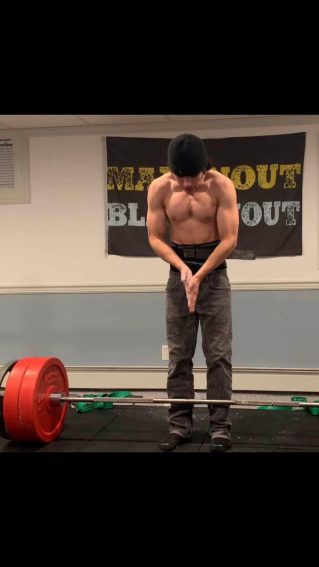
Deadlifting is one of the most important compound movements around, despite what type of athlete you are. It my personal favorite out of the three main lifts (squat, the bench, and deadlifts). Deadlifting is typically viewed by an average gym-goer as a back exercise. However, your trapezius, erector spinea, biceps, forearms, and quads are all engaged in the deadlift.
How so?
Well obviously your back muscles, biceps, and forearms contribute and develop muscle easier than other muscles involved because these are the primary agonist’s. However, other body parts and form must be used.
Back: Form and Contribution;
Back, Bis, Chest, forearms, biceps, and form,
1)During the deadlift one must NEVER let their back band in a motion where your spine can bend. This can cause serious injury or pain.
2. You need to work on the form, no matter whether conventional or sumo. Keep your back straight and chest up to keep the proper range of motion so that your back doesn’t bend too much, whilst keeping your chest up a little helps with proper form and injury prevent injury. You need strong biceps and triceps for your grip especially regarding what stance you use. If necessary for a 1RM, you should use straps to prevent further injury to calluses or open wounds. Also, I like to roll the barbell forward a bit then roll it back to me. This engages my Latissimus Dorsi muscle activated before you start your deadlift. Then, I launch my knew (like typical deadlifting) and as soo as. I grab the bar I squeeze it as hard as I can and pull it close and tight amongst my calves because with a bent-over back and improper form you can easily hurt your back, cause muscle sprains, all of which can be a result of bad form and bent over deadlifting. If bending over too much, too much gravity will pull the weight down and you’ll lose the rep/ Now rep work: Personally, I perform rep work with both however I would max out or compete with conventional. This way your overall deadlift form increases and lowers risk of injury.
Lower Body
3, Quadriceps: Always slightly squat down. NOT a full squatting motion, just low enough to get down to the bar. engage your quads on the lower portion of the movement and stretch beforehand.
4. SPREAD THE FLOOR: Newton’s third law is “for every action force there is an opposite reaction force.” Now spreading the floor means to keep your feel slightly bend inward in which when pulling the barbell, you try to rip the ground with your feet. This applies pressure, allowing Newtons third law to have its equal opposite reaction force. This generates more force all around and strengthens the compound movements.

